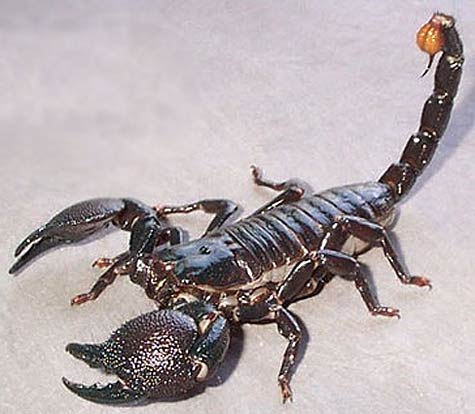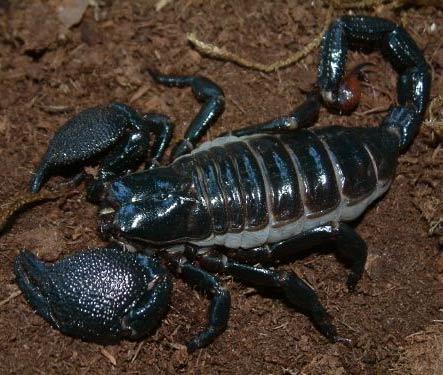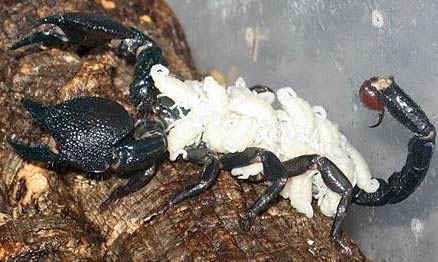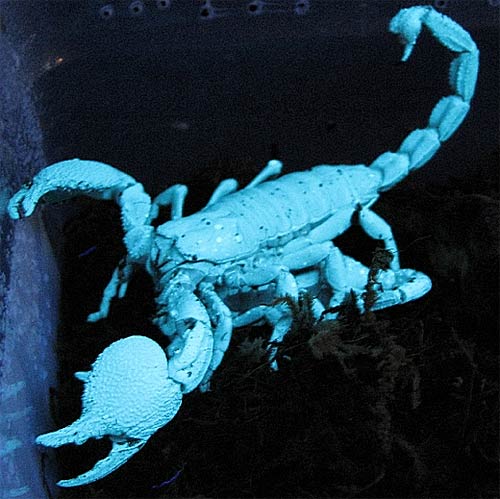Emperor Scorpion – A Gentle, Glow-in-the-dark Giant

In most movies and media, scorpions are creatures to be feared. After all, with their massive pincers, a sharp, stinging tail, and an aggressive attitude, who wouldn’t be a little tense around these creepy arachnids?
As a matter of fact, there are many scorpions that fit the description Hollywood likes to give them; however, the emperor scorpion is not one of them. A “gentle giant” amongst its peers, this scorpion certainly shines a more agreeable light on the species as a whole.

The emperor scorpion is probably the most recognizable creature of its kind. One of the largest species of scorpion in the world, it averages about 8 in (20 cm) in length. Its body is sleek and black, protected by a very hard exoskeleton. It can be found throughout West Africa’s forested areas, digging burrows for shelter. It generally has a short lifespan in the wild, averaging at about 2 years. However, in captivity, they can live for anywhere from 5 to 8 years.

Babies riding on the back of the mother, a common scorpion youth activity, some spiders too.
The emperor scorpion’s primary prey is termites and other insects, though they may occasionally feed on rodents or other small animals. Despite its threatening appearance and impressive offensive equipment, this creature has a fairly shy and reclusive disposition, and likes spending its spare time hiding out in its deep burrows. Don’t let that fool you, though. This scorpion may be gentle, but he is no pushover! If cornered, the scorpion will assume an aggressive stance, and if provoked further, it will most definitely attempt to sting and pinch whatever may be harassing it.

Glowing under blacklight
Because of its shy and relatively calm attitude, it is a popular choice of pet for scorpion enthusiasts. It is generally easily handled and easy to care for. Its venom has a low toxicity profile, and this certainly lends to its popularity among its handlers. For obvious reasons, its diet is very different in captivity, and by no means is this scorpion a picky eater. It feeds on many different types of insects and small animals. Crickets, mice, and mealworms are some of its more favored choices of nourishment.
Another nice trick the scorpion performs is that it glows under a black light. Many scorpion species’ exoskeletons have properties that cause fluorescence with certain wavelengths of light. It is not understood exactly why this happens or what purpose it serves.
